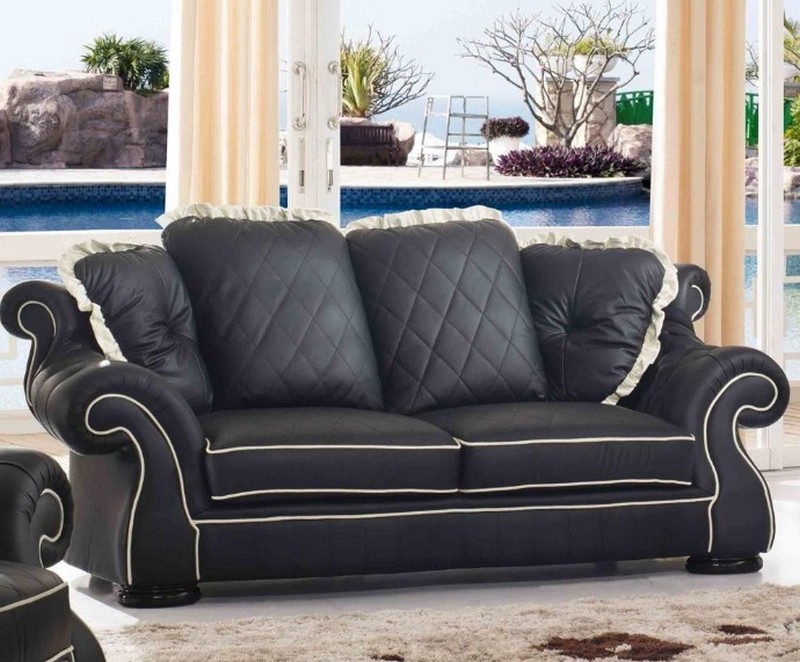Leather is one of the classic materials, and its appearance is awe-inspiring. So that your new leather sofa has these visual advantages, following a few basic rules is essential. After all, new furniture must be convincing and harmoniously blend with the rest of the living room.
Therefore, when looking for a new leather sofa, many wonder which model best suits their interior style. The good news is that picking a personal favorite is relatively easy. This is partly due to the abundance of choice: classic leather sofas no longer come only in calm colors. Today, you can even be inspired by various designs in leather.
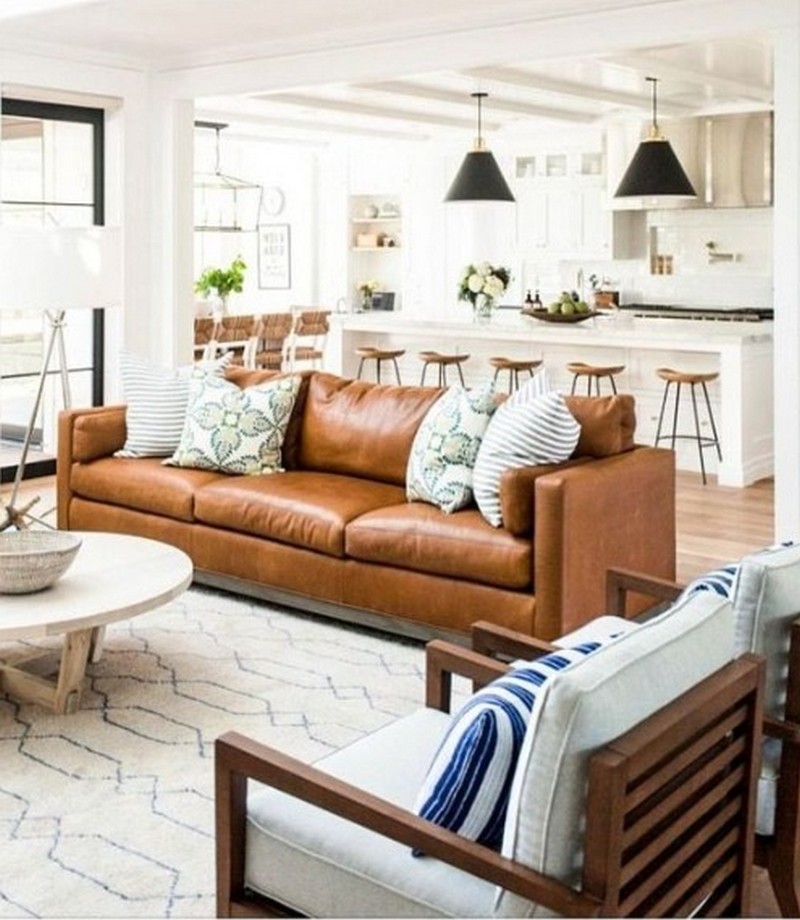
The right size
The important thing is that you have lots of space, especially if you choose a large leather sofa in a dark color. Otherwise, your new furniture will visually overwhelm the room—no matter how beautiful the sofa itself is.
To harmoniously integrate a leather sofa into a room, its size must match the room’s dimensions. Among other things, make sure…
The sofa does not limit your freedom of movement.
You can easily use additional functions, such as turning it into a sofa bed.
Only when the sofa matches the living room can the piece of furniture show off its visual excellence.
Play with matching colors.
Anyone interested in buying a leather sofa is currently faced with a relatively diverse choice of colors.
Several factors come into play when looking for the right variant. One is finding a model that…
According to your taste,
the color that matches the rest of the furniture
can highlight the advantages of the room in question.
A large, dark leather sofa is often unsuitable for small spaces, as are too-small versions in large lofts. It is also essential to relate the new sofa to the rest of the furniture rather than evaluate it in isolation. Even the most beautiful leather sofa only works in the right environment!
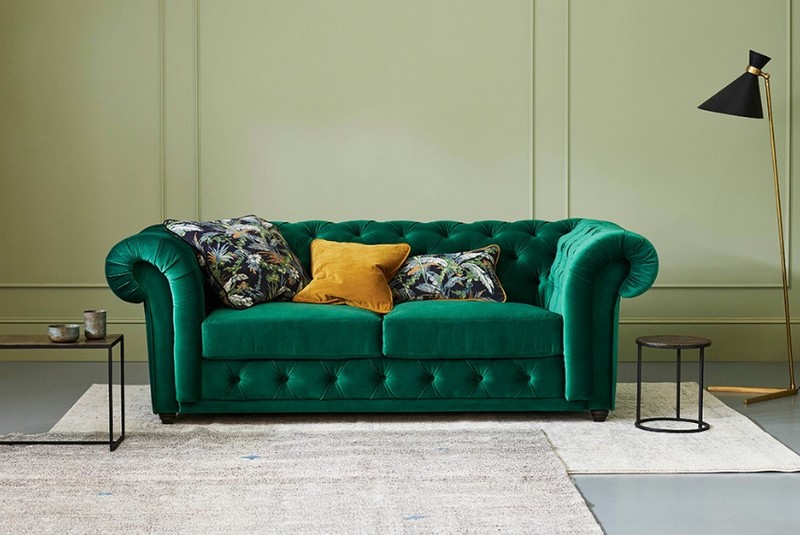
What interior styles does a leather sofa suit?
More good news: Leather sofas can be combined with almost any furniture style and are therefore not tied to specific requirements.
How about a light-colored leather sofa, for example, to highlight the minimalist interior style in a special way? A dark brown leather sofa can take even country and rustic style to a new level. Your imagination is almost limitless.
However, to create a harmonious overall picture, it is essential to maintain the existing style with dominant pieces of furniture. Therefore, the design of a leather sofa should be based on the rest of the furniture and its characteristics.
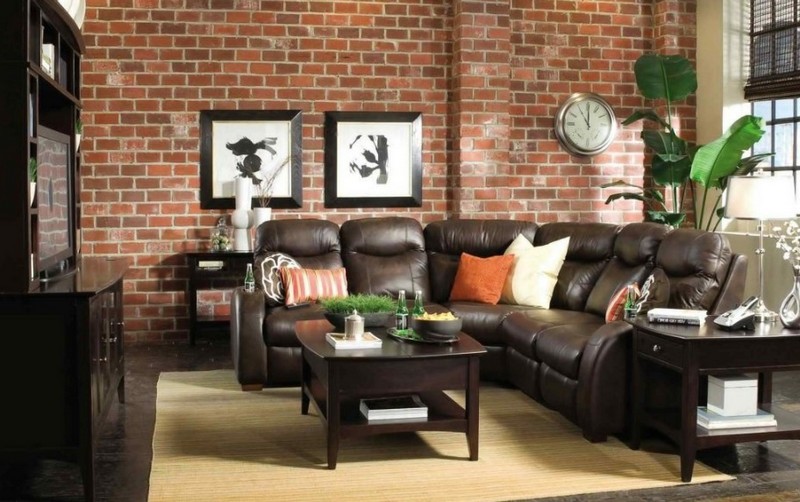
Accessories for leather sofas
Of course, depending on your personal taste, you can add decorative accessories to the leather sofa. Pillows and blankets, in particular, are classics here.
It is possible to consciously play with colors and patterns and their effects, especially in this area. This includes smaller style changes, such as colorful pillows on black furniture.
At the same time, attention should be paid to the interaction between sofa decoration and the surrounding environment. If the design or color of the pillows is reflected in the carpet, it can contribute to a harmonious appearance in the living room.
And: The accessories you use along with your leather sofa should not only be visually appealing but also functional. Classic floor or reading lamps add to the comfortable atmosphere while inviting you to end the evening in a very special place.
How to Blend Different Decorating Styles for an Original Appearance
Your home should mirror your individual taste, and let’s face it; most of us don’t fit into just one design category! With that in mind, in this article we’ll explore the various interior decorating styles and how you can integrate them in your home to achieve a truly remarkable look.
If you’ve been contemplating mixing styles, you probably already have some familiarity with these styles. However, if you’re not familiar with some of them, or if there are one or more that have caught your eye, here’s a quick overview of each style.
Rustic style is characterized by the use of natural materials, earthy tones, and a preference for cozy, handmade, and vintage elements. A touch of rustic charm is definitely welcomed here. More information about rustic style can be found here .
Scandinavian style emphasizes beauty in functionality. Bright, open spaces are crucial, with natural materials, clean lines, and a minimalist aesthetic – but with a touch of ‘hygge’ coziness. We delve into hygge – and Scandinavian style – in more detail here .
Maximalism is all about vibrant, bold colors and layered patterns. Often referred to as eclectic, maximalism is bursting with personality – the more, the better with this look!
Minimalism is the complete opposite of maximalist decorating. The less clutter, the better for a minimalist home! Clean lines, practical materials, neutral colors, and a serene ambiance make up the minimalist space.
Contemporary style – not to be confused with modern style – is the style frequently seen on Instagram. It’s all about the latest trends, featuring mixed materials, comfortable furnishings, and Pantone’s color of the year or Peach Fuzz for 2024.
Modern style, which first emerged in the early to mid-1900s, is another style that champions sleek lines, neutral colors, natural materials, and a focus on functionality.
Art Deco style is an excellent choice if you want to create a space that feels luxurious and glamorous. Striking geometric patterns, rich colors, and lavish materials like velvet are the trademarks of an Art Deco home.
Shabby Chic is all about the well-worn look – comfortable, aged, and improving with time. Think of quality pieces like vintage Chesterfield sofas and decor featuring whites, grays, and pastels. Want to learn more about Shabby Chic?
Bohemian spaces are eclectic, with a free-form design. Rich patterns, vibrant colors, and a fusion of various cultures all come together.
Industrial style is all about the raw, unfinished look – envision trendy New York lofts in old factory buildings. Plenty of metal and wood, neutral colors, and a utilitarian feel.
The Japandi style combines Japanese minimalism with Scandinavian functionality. It features clean lines, natural materials, and an uncluttered feel, with simplicity being essential to this aesthetic.
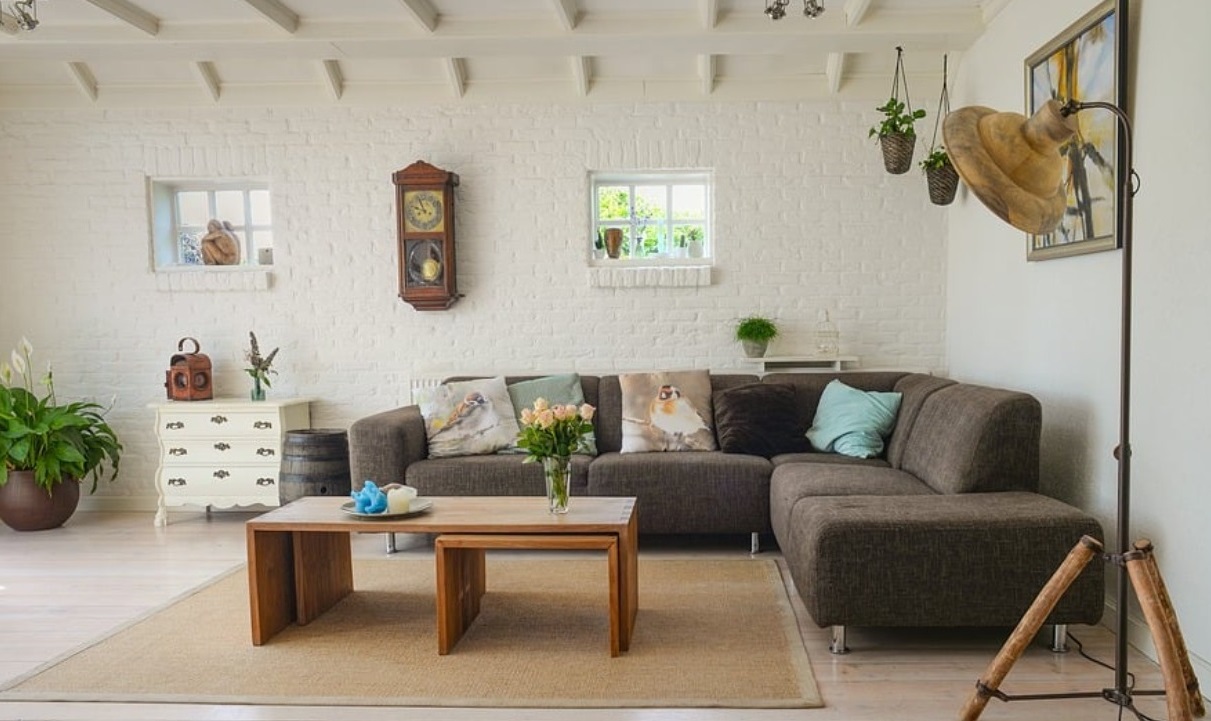
How to Blend Interior Design Styles
Some designers recommend adhering to rules when decorating your home. While rules can be a helpful guideline, our tips are just that:
Choose a dominant interior design style
Designers often refer to this as the 80/20 rule. Begin with the primary style that dominates the room and select furniture and fixtures that reflect this. Then, accents such as soft furnishings, art, table decorations, and so on can be borrowed from secondary styles. For example, if you’re blending rustic and industrial styles, a rustic wooden table and rattan lamp would complement a recycled brick shelving unit and an antique brass lantern.
Transform mismatched pieces into focal points
If you have a piece of furniture or artwork that doesn’t seem to fit in with the room, make it the focal point. Instead of trying to conceal it, drawing attention to it will make it appear intentional.
Employ a theme rather than a decorating style
If you already have furniture and decorative items and aren’t planning to purchase anything else, working with a theme can help create a cohesive aesthetic. Working with a theme like a beach house, mountain cottage, or country kitchen ensures that the theme will shine through rather than trying to force a style that doesn’t quite fit.
Aim for visual equilibrium
We’ve previously discussed the importance of achieving visual balance when styling a space and choosing wall decor. Our brains naturally seek symmetry in a room, so it’s important to vary the height of furniture and fixtures, balance out heavier pieces with equally large ones, and minimize clutter to allow furniture and decorative pieces to stand out.
Establish a cohesive color palette
Selecting complementary colors is a great way to unify your chosen style. According to Dulux, the 60/30/10 rule is helpful when using multiple colors in a room. Here’s how it works:
– Ensure that 60% of the room is the dominant color.
– 30% should be a secondary color that complements the primary one
– 10% should be an accent color that either complements or contrasts with the primary and secondary colors
If you choose colors with the same undertones (warm or cool), they should harmonize tonally.
Which Interior Design Styles Pair Well?
Combining interior design styles can result in a unique and personalized space. Certain styles naturally complement each other, enhancing the overall aesthetic of the room. Let’s explore the styles that work harmoniously together.
Rustic and Industrial
These two styles blend seamlessly due to their mutual emphasis on natural materials and a rugged aesthetic. Rustic design incorporates elements like reclaimed wood, stone, and cozy textiles, while industrial design features exposed metal, brick, and utilitarian elements. Together, they create a welcoming space with a contemporary feel. For example, consider pairing a natural wood dining table with powder-coated steel legs and an industrial-style light fixture featuring copper or steel.
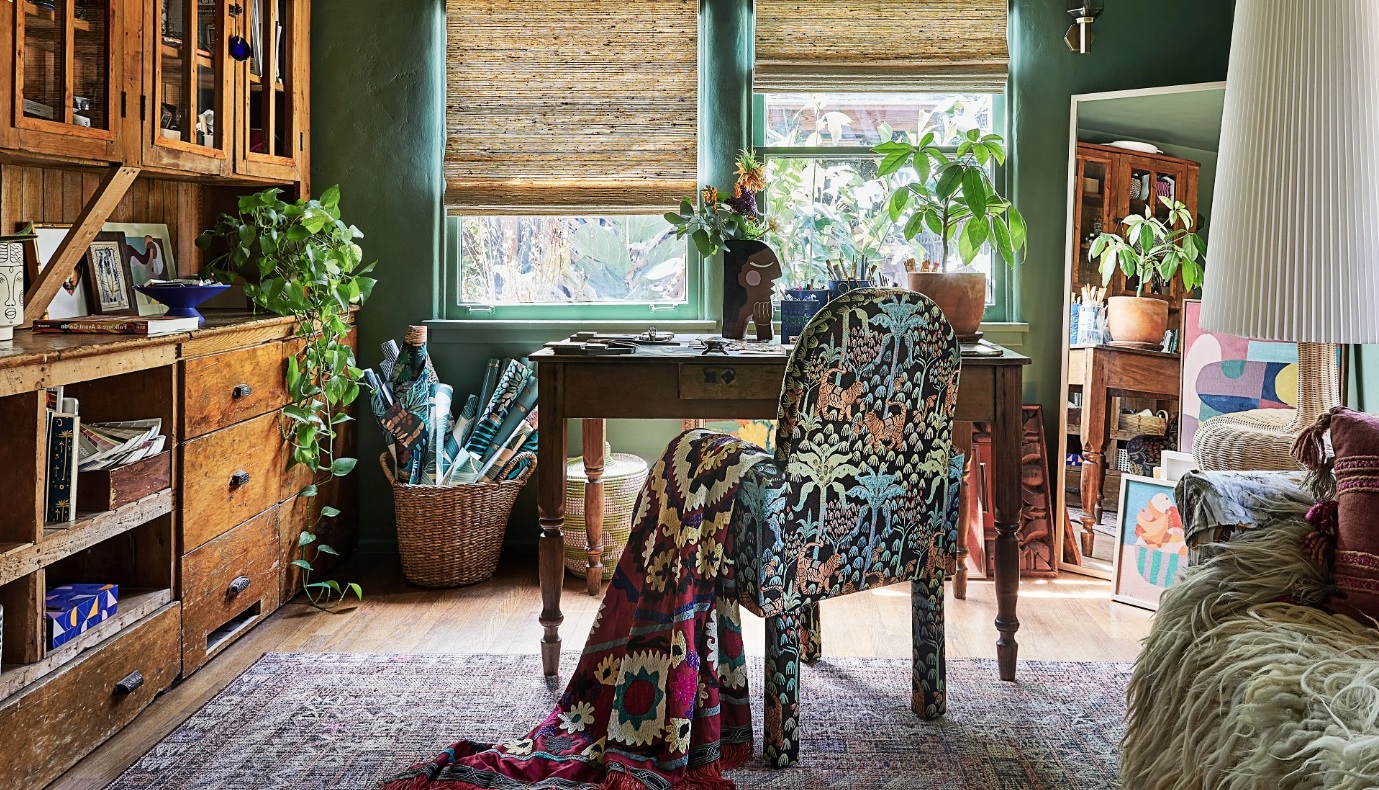
Maximalism and Bohemian
Combining these two styles is a great choice for those who appreciate vibrant, eclectic interiors. Both styles showcase bold colors, rich patterns, and layers of texture. Maximalism encourages layers of decor, while Bohemian adds an artistic, free-spirited feel with global influences. A blend of these styles results in a highly personalized space with plenty of character.
Art Deco and Contemporary
Art Deco and Contemporary styles complement each other perfectly, as they both embody luxury and modernity. Contemporary style emphasizes sleek lines, comfort, and luxurious metallic finishes like brushed gold, brass, and silver, while Art Deco is known for its glamorous and grand designs, bold geometric patterns, rich colors, and luxurious materials. Together, they create a stunning and luxurious space.
Which Interior Design Styles Should Not Be Combined?
Although mixing interior design styles can be visually appealing, some combinations simply do not work well together. When the contrast between two styles is too pronounced, combining them can result in an unbalanced and mismatched look. Let’s explore some common combinations that do not harmonize.
Maximalism and Minimalism
These two styles are polar opposites – they cannot be combined without losing their individual essence. Maximalism emphasizes bold, layered, and vibrant decor, while minimalism focuses on clean lines, simplicity, and a “less is more” approach. Attempting to blend the two styles is not successful.
Art Deco and Rustic
Rustic decor highlights natural, earthy elements and exudes a comfortable yet rugged feel. On the other hand, Art Deco is characterized by luxury, opulence, bold geometric patterns, and deep, rich colors. The materials and goals of each style are too disparate to harmonize effectively.
Bohemian and Industrial
The clash between these two styles makes them challenging to blend seamlessly. Bohemian style is eclectic, with a diverse color scheme and an unrestricted approach, whereas industrial design is raw and utilitarian, featuring neutral colors and raw materials. While select elements of each style can coexist in one space if carefully executed, combining these styles can be difficult.
Reasons to Avoid Matching
Have you ever thought about the key to effortlessly blending furniture? There’s something about a room that harmoniously combines different pieces of furniture, giving it an elegant and luxurious appearance. Professional interior designs often steer clear of furniture sets. Instead, they opt for a thoughtfully curated mix of furniture that doesn’t match exactly but complements each other seamlessly.
For instance, envision a bed, nightstand, and dresser that are all uniform, or a coffee table and end table that belong to the same set. While this look is coordinated, it lacks the impact of a carefully curated appearance. To achieve a designer look, your furniture should complement each other without being completely identical. Mixing different pieces of furniture enhances the potential of the room.
So, why should you avoid matching? Your home is a personal expression reflecting the personalities of its inhabitants. To create a home that evokes emotions rather than just serving a functional purpose, you can infuse personality into your furniture choices. Incorporating different pieces of furniture can accomplish just that. You can even go a step further by integrating personal items or family heirlooms into your current purchases to further reflect your identity.
Mixing furniture also enables you to create a timeless appeal. By combining different pieces, you have the flexibility to update some elements to stay current. Having a few foundational pieces to anchor the room allows you to be more adaptable as your style evolves.
You can also apply this approach to different price points. An effective way to do this is by investing in high-quality larger pieces and taking advantage of budget-friendly options for accent pieces. This makes it a more cost-effective way to furnish a space.
Tips & Tricks for Effortlessly Mixing Furniture
There are several tips and tricks that can assist you in seamlessly blending furniture. Here are some key considerations to keep in mind to achieve a perfectly styled space.
Diversify Materials Incorporating a variety of materials in your furniture will add visual interest to the space. For example, mixing brass, black, or light wood will be more visually appealing than using only light wood. Additionally, using different finishes of the same material can also create a visually appealing effect. For instance, consider using a mix of metals instead of a uniform look.
Another tip for blending materials is to combine wood, metal, stone (such as marble or quartz), and natural materials like rattan. Pairing natural materials like rattan with sleek materials like marble or dark metal can create a softer ambiance. This ensures that the space feels more welcoming and balances a cozy, thoughtfully crafted appearance.
Limit Colors to 3-4 When styling a room, it’s advisable to stick to a few colors. This applies to all aspects of the room, including furniture, upholstery, textiles like pillows and rugs, and decorative accessories. For instance, when selecting furniture, you might use an upholstery color, a wood color, and a metal color. These same colors can be incorporated into your decorative accessories. Utilizing a color palette that resonates with you and sticking to a few colors allows the eye to move seamlessly through the room.
Repetition of Elements This is a crucial aspect in creating coherence when blending furniture. Initially, identify a characteristic that you like in one of your choices, then find another piece of furniture that mirrors that characteristic. A great example of this is using a rattan coffee table with side tables that also feature rattan. You can also use decorative items to repeat elements from a piece of furniture.
Consistent Style To achieve a cohesive look, it’s important to select furniture with similar styles. For example, traditional materials like brass or marble will complement furniture that also has a traditional look and feel. While mixing styles is possible, there should be a few pieces of each style to maintain a harmonious flow in the room. For instance, a rustic coffee table and end tables with a more traditional sofa and chairs.
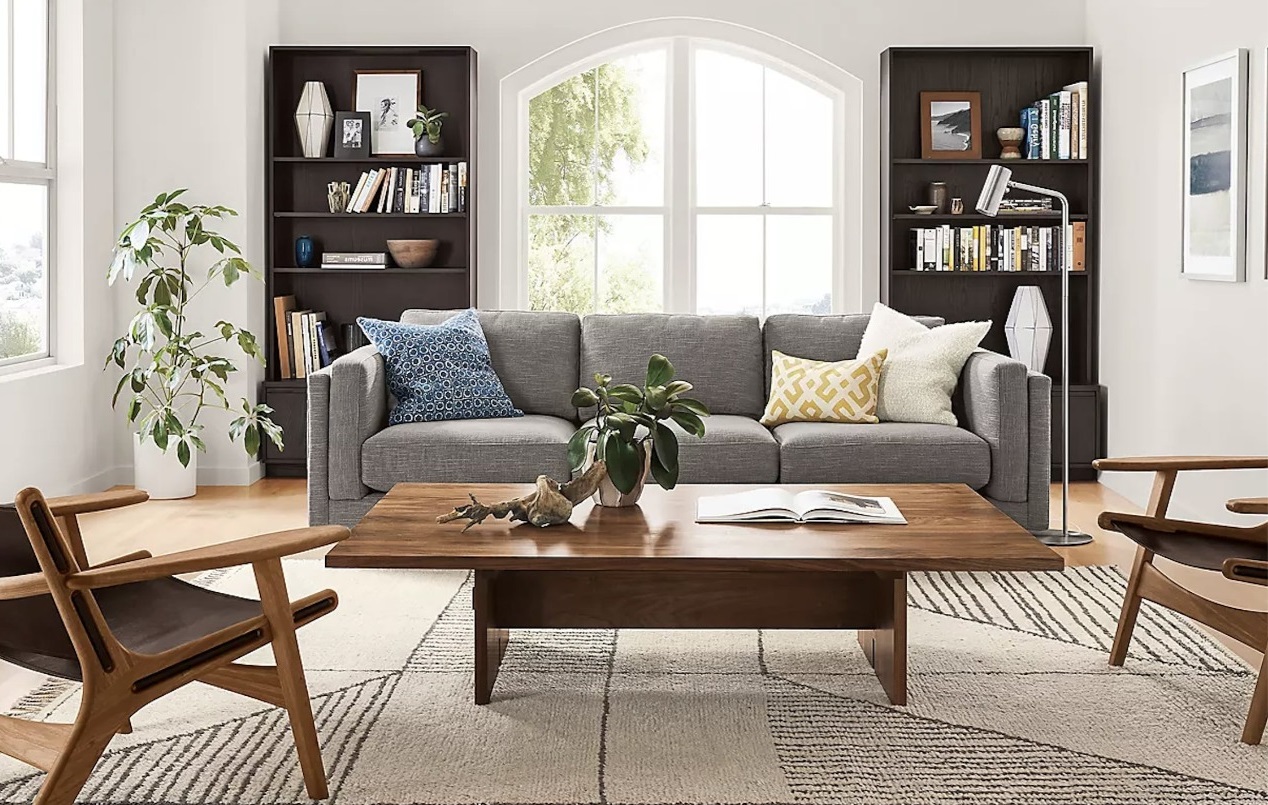
Maintain Consistent Proportions When Mixing Furniture
Avoid using furniture pieces that are different in size when mixing them, as it can make them look mismatched. For instance, a significant difference in size can be visually overwhelming. A common mistake is using a side table that is too small for the sofa or a nightstand that appears too tiny next to a king-size bed. Strive to balance the proportions of your furniture to create a unified look. This is crucial not only for the overall appearance of the room but also for practicality.
Ready to Give It a Try?
If you’re prepared to try mixing furniture, here are some starting points. You can observe how some of the aforementioned strategies are utilized in this combination of a coffee table and end table. Photoshop or Canva can be valuable tools for visualizing all your furniture together. These programs enable you to create a mood board or gain a better understanding of how items will complement each other. Having a visual representation can greatly assist in decision-making, particularly for larger purchases.
Interested in Incorporating Antiques into a Modern Home?
While many modern-style homes are becoming increasingly popular, the interior can still be customized to individual preferences. One popular theme is integrating antiques, which exude a vintage and timeless feel, into modern homes.
However, this must be done thoughtfully to ensure a seamless combination and consistent design. If you’re considering decorating your modern home with antiques, consider the following methods.
Select a focal point for the furniture
Incorporating a few antiques can make it easier to blend designs. Antiques can bring character, warmth, and heritage to a home. Consider featuring only a few select furniture pieces as a focal point. Keeping it simple can help balance the presence of beautiful antiques. For instance, an antique table can lend a modern and opulent touch.
Showcase small items or accents
Instead of incorporating large and excessive furniture, opt for smaller antiques such as mirrors, chairs, tables, and decorative items, which can serve as accessories that tie the room together. You can also select high-quality vintage artwork to introduce antiques into a modern home. Additionally, these smaller items are easier to pair with other decor.
Update old furniture with modern accessories
One way to infuse a modern feel into antique furniture is by revitalizing it with contemporary accessories. White vases, pops of yellow, or other small colorful details are timeless choices. Additionally, incorporating contemporary decor items and complementary textiles can enhance the antique furniture without overshadowing it. Ensure that the older furniture pieces are not left in isolation.
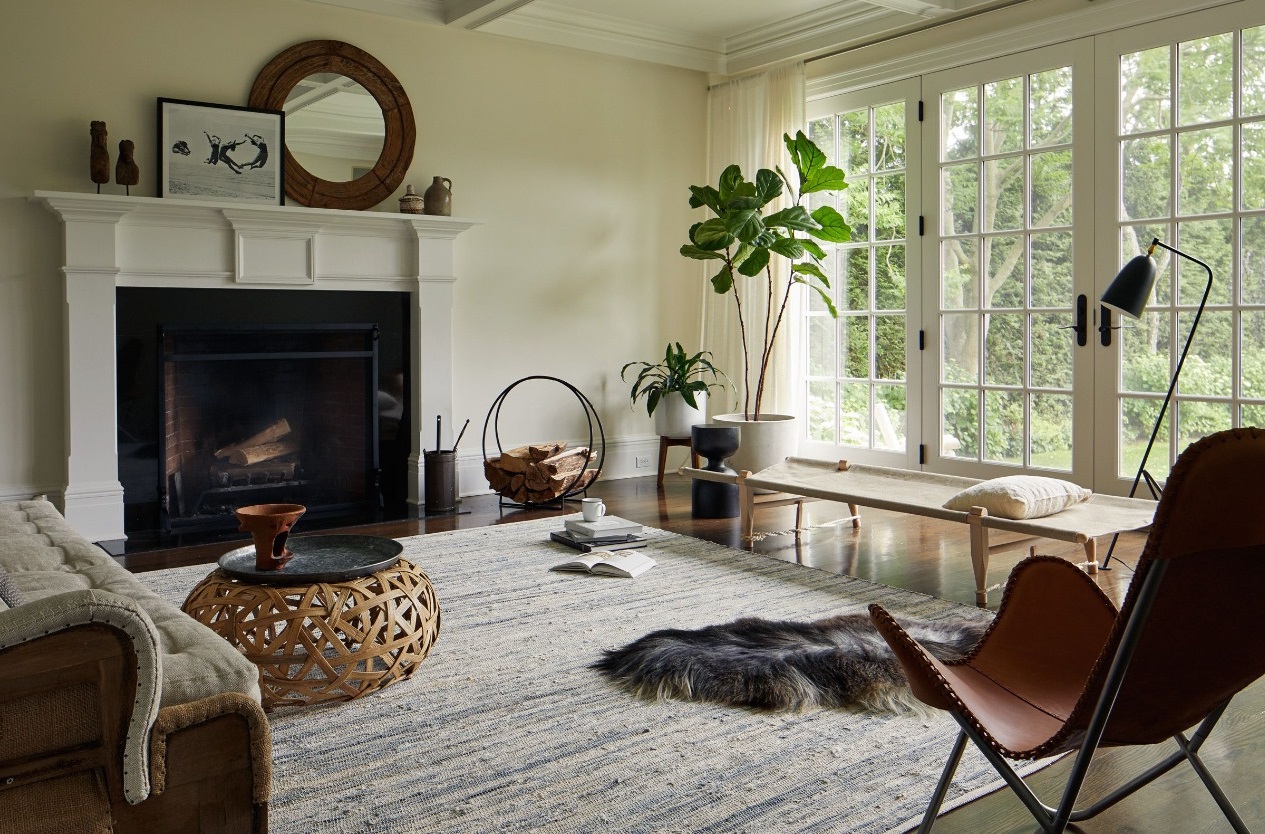
Pair with a modern rug
A modern rug can help to balance the presence of an antique within a space. Consider a modern custom rug with a futuristic design. Pay attention to the color, material, and placement of the rug.
Match with wood finishes
When combining different wood pieces, avoid using the same finish throughout the room. Pairing various wood types and complementary finishes, such as metal, can lend a unique feel to the room. The wood pieces can add color, texture, and warmth, defining the room’s ambiance.
Update the hardware and light fixtures
Updating the hardware can help modernize and complement antiques. Consider switching to matte black or matte brass for a distinct modern touch. Also, ensure that the hardware complements the lines of the furniture piece. Alternatively, consider replacing the lampshades with more neutral and modern options to highlight the vintage items in the room.
